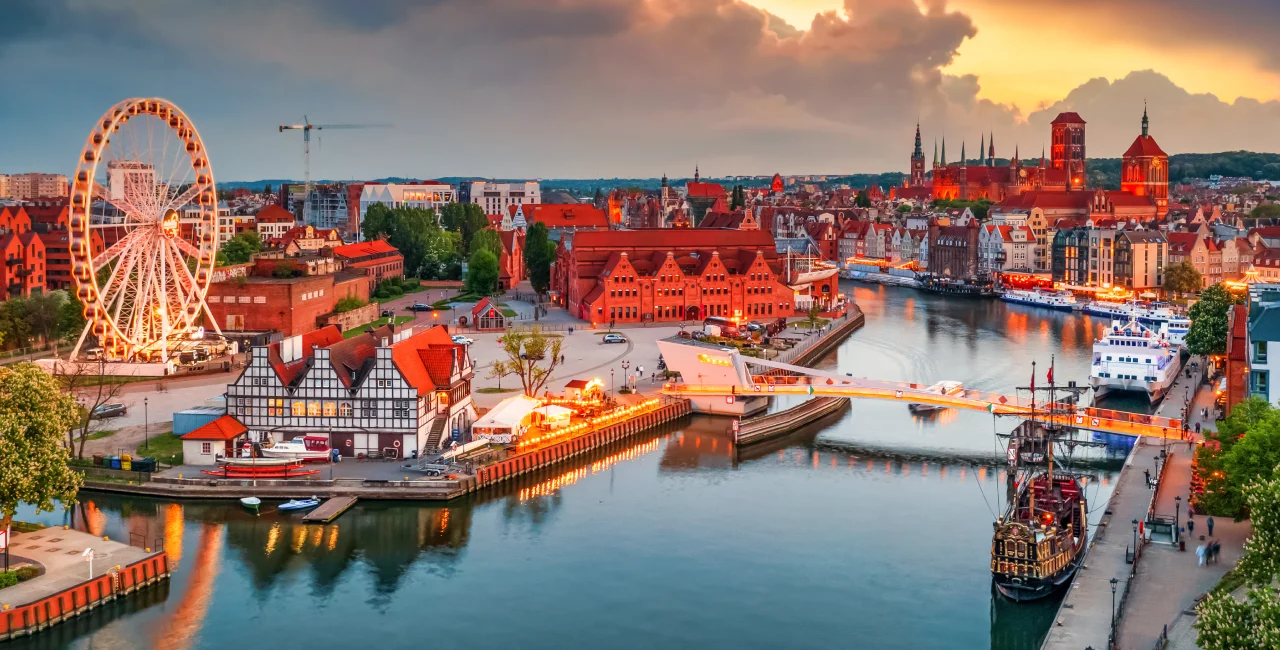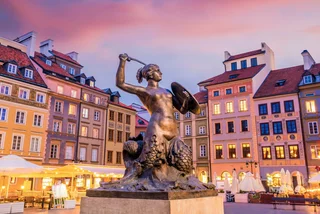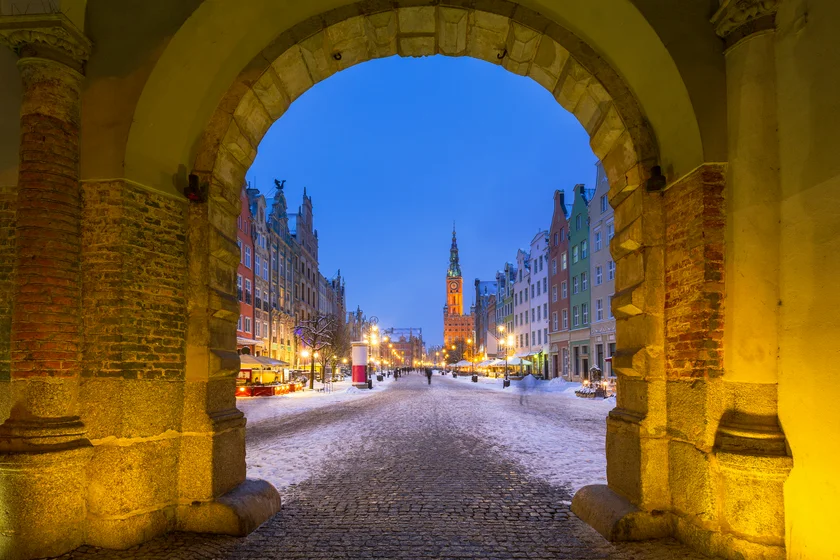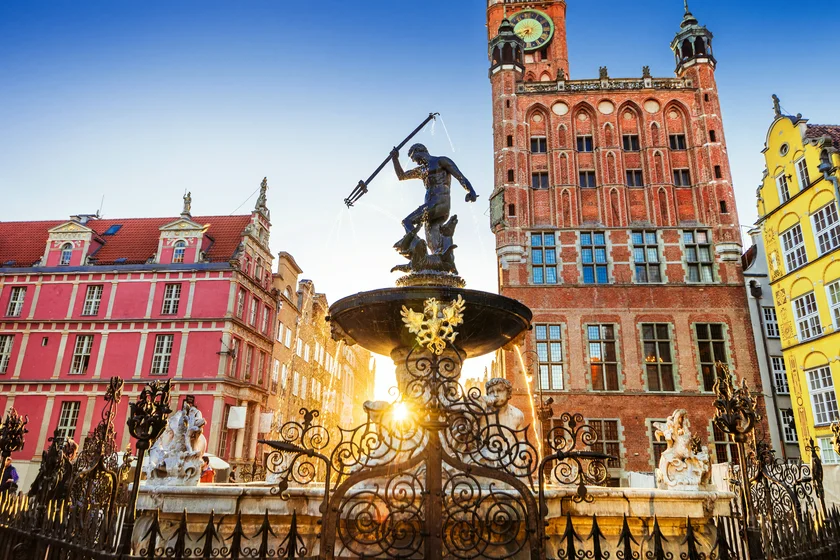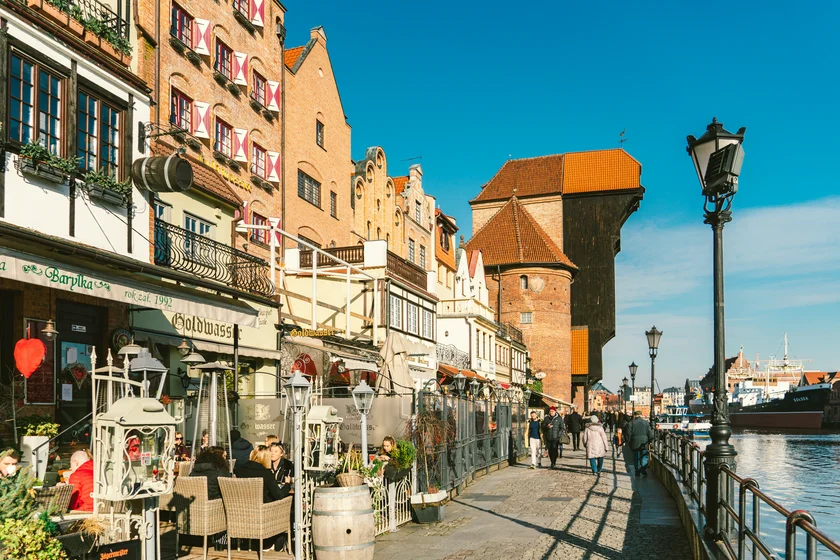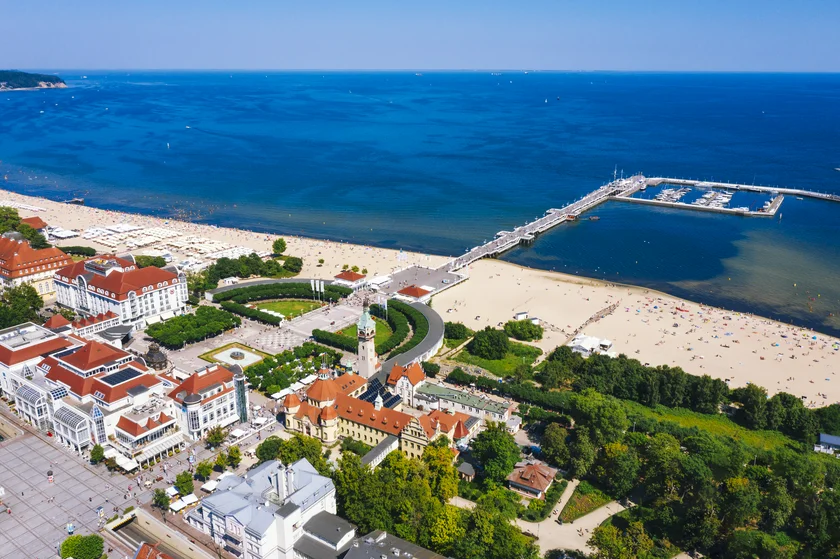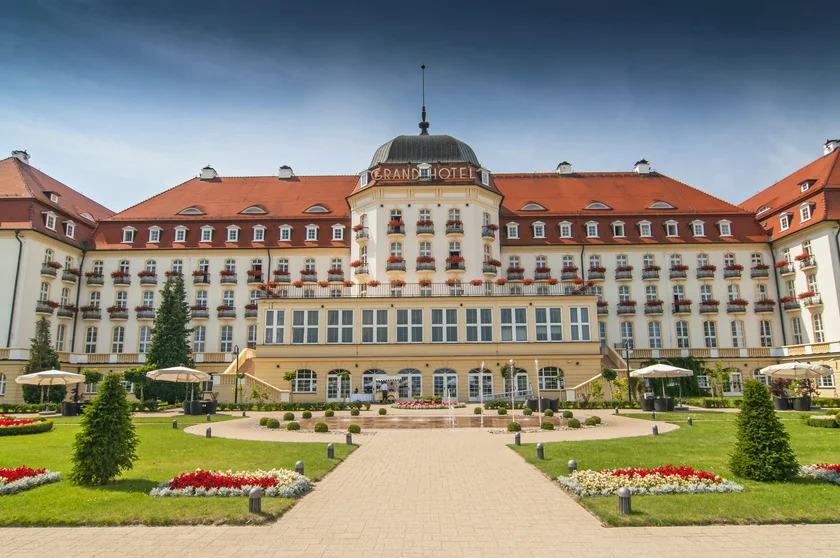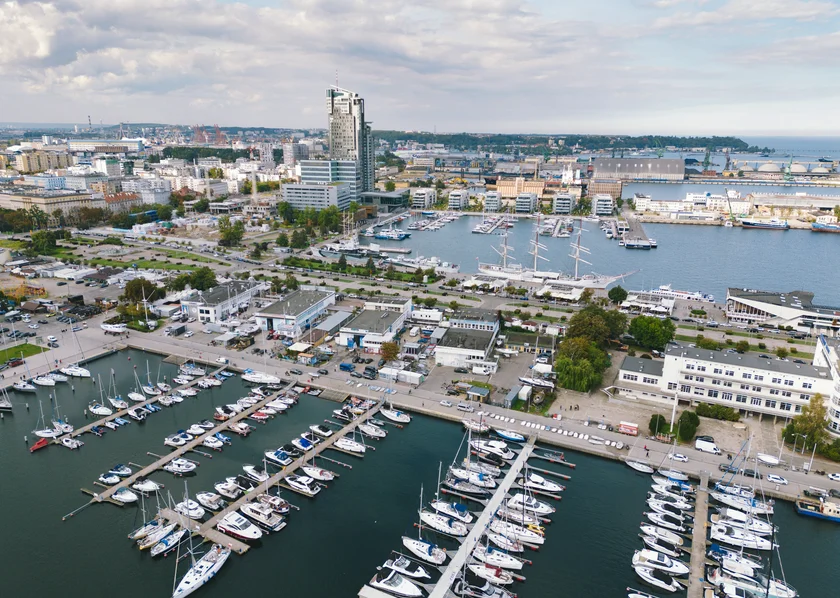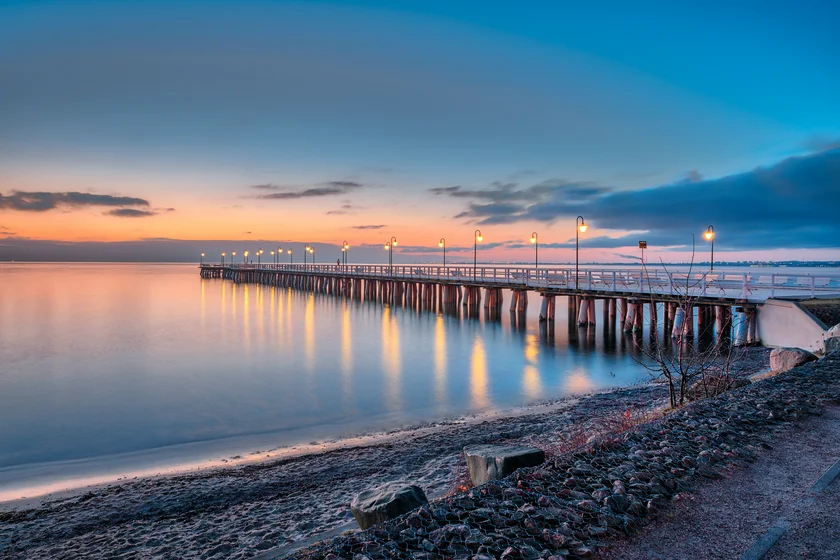First-time visitors to Poland tend to visit the country’s largest (Warsaw) or most majestic cities (Krakow). But a more intimate introduction to Polish culture, history, and heritage can be found to the north, along the Baltic Sea where a band of three coastal cities bundle historic grandeur, spa-resort charm, and urban appeal into one long weekend getaway.
Just a short flight from Prague, the compact trio of destinations comprising the Tricity – Gdańsk, Sopot, and Gdynia – is easily explored via ferries and trains connecting their picturesque ports and revitalized waterfront promenades.
Those still looking for a holiday filled with medieval lanes and urban appeal will find just that plus the calm of the sea in a setting that is both visually and spiritually worlds away from the tourist crowds of larger Polish destinations.
GDÁNSK: A HANSEATIC HEARTLAND
Modern Gdańsk is a brick-accented mix of shops, restaurants, boutique hotels, and historic sites tucked into meticulously restored facades – the Old Town was decimated during World War II – that nods to both its maritime and medieval roots.
Founded in 980 AD the city, formerly known as Danzig, thrived as a dominant merchant stronghold on the Baltic under the Hanseatic League. As a "free city" exempt from Polish taxes, its markets attracted foreign traders from across Europe. This diverse cultural past can today be glimpsed in Gothic spires that tower above the Flemish, German, and Dutch merchant quarters lining the river.
The Gdańsk shipyards hold an essential place in modern history books as well. Here humble electrician Lech Wałęsa sparked Poland's Solidarity movement in 1980. Drawn by the historic docks and the spirit of workers' empowerment, shipbuilders launched mass protests against communist rule. The towering cranes visible from Wałęsa's former welding shop remain a moving sight.
Gateways to history
Exploring Gdańsk on foot is easily doable in a day, though there’s plenty to fill an entire weekend itinerary. The Old Town is hemmed in by a series of medieval gateways, and elaborate fortifications that once regulated access through the city walls.
The Green Gate bridges the Motława River to Długi Targ’s (Long Market) bustling square but was once fortified with walls and a drawbridge. Its grand four arches reflect Flemish origins, while galleries now occupy halls that briefly housed Polish royalty.
On the opposite side of the Long Market, reconstructed after WWII destruction using remnants secreted away by residents, the Golden Gate's eight allegorical statues depict values like Peace and Justice that embodied Gdańsk's prosperity. Archival photographs inside frame its former ruined state.
The Upland Gate contains preserved machinery from its drawbridge pulley system, allowing visitors a glimpse into how this entrance's defenses operated. Decorated with the coats of arms of countries influential to Gdańsk, it marks the original 16th-century starting point of the majestic Royal Way and now guides tourists through the Old Town.
About that Old Town…
While Gdańsk's reconstructed Old Town charms at every turn, one street stands out for its sheer grandeur, Długi Targ. Once part of the prestigious Royal Way, this historic thoroughfare is a showcase of the city’s Baltic heritage. Tall townhouses in vivid hues line the street, ornate facades crowding together due to medieval tax laws incentivizing narrow builds.
Cafes and bistros spill onto the lanes, perfect for admiring the Renaissance masterworks over a beer or the local Goldwasser liqueur, a potent root and herbal spirit flecked with gold. Landmarks like Artus' Court, enveloped in Dutch Mannerist grace, and the immortal statue of Neptune are Instagrammable focal points.
The largest brick church in the world
Perhaps the city’s most famous attraction is St. Mary's Basilica, the largest brick church in the world, capable of holding 25,000 worshippers. Its ornate astronomical clock dates to 1464, intricately showing the time, tides, saints, and zodiac. The 78-meter tower provides panoramic views if you can survive the 405-step climb. The UNESCO site sustained WWII damage but remains a masterpiece of Gothic architecture and an anchor of the Old Town skyline.
The city’s most beautiful street
Nearby the picturesque cobbled Mariacka Street connects St. Mary's Basilica to the Motława River. A must-see for its elegant townhouses adorned with gargoyle gutters and exquisite detailing on railings, stoops, and terraces – think Brooklyn meets The Witcher – it’s lined with amber shops and cafes. The street was rebuilt by Ukrainian immigrants after WWII using salvaged materials from the neighborhood.
Riverfront promenade
A stroll along Gdańsk's riverfront promenade, dotted with scenic restaurants and shops, is one of the city's most atmospheric ambles. Here maritime history and a riverside setting come to life. Along the way, look out for Zuraw, the historic port crane and symbol of the city's trading past.
The crane dates back to 1367 and is an enduring symbol of the city's trading history. Once powered by men walking inside to turn the lifting mechanism, it was rebuilt after a fire in 1442, serving as both a working crane for cargo and ship maintenance and a defensive gate. Damaged in 1945 during the Battle for Gdańsk, it was reconstructed post-war and is now part of the Polish Maritime Museum, offering exhibitions on port life and maritime history.
Wałęsa’s legacy
The European Solidarity Centre in Gdańsk houses an exhibition devoted to the history of the Solidarity movement, opened in 2014 on the anniversary of the 1980 Gdańsk Agreement. Solidarity was an independent self-governing trade union that spread across Poland in the 1980s to organize workers against the communist government and demand freedom of speech and political reforms. The center honors the movement through multimedia exhibits and artifacts within an architecturally innovative "shiphull" design.
GOOD EATING IN GDAŃSK: Located on the Motława River in Gdańsk's historic center, trendy Tygle Restaurant’s "Flavors of Gdańsk" menu offers a taste of the region through dishes like mussels, fish soup, and a local take on schnitzel that’s topped with Ceasar salad. Sweeping river views provide the perfect backdrop to sample traditional Polish comfort foods with a modern twist. Pieroganie Stary Młyn in Gdańsk offers an excellent variety of authentic pierogi, from boiled to baked, with both sweet and savory fillings that range from gourmet (forest mushrooms, cream, and leek) to off-the-wall (peanut butter)!
SOPOT: SEASIDE SERENITY
Nestled between Gdańsk and Gdynia, Sopot beckons as a tranquil escape on Poland's Baltic coastline. Once a modest fishing village, in the late 19th century it blossomed as a resort town, known for its iodine-rich waters, abundant pine forests, and proximity to the sea.
Sopot's allure didn't wane with time; instead, it evolved into a cultural epicenter, hosting the renowned Sopot International Song Festival and establishing itself as a wellness getaway. The beach, adorned with powdery sand and a leafy promenade, is a haven unmatched on the Baltic coast. It's a dreamy stretch where palm trees sway, inviting sunbathers to bask in the therapeutic embrace of the sun.
An easy day trip from Gdańsk (or a more affordable and laid-back base for exploring the wider region) Sopot’s charming eateries, walkable city center, scenic pier, and buzzing nightlife make it a destination fit for everyone from high rollers to stroller pushers.
Sopot Pier
The Sopot Pier, Molo w Sopocie, is Europe's longest wooden pier stretching 516 meters into the Baltic. Home to a pirate ship housing a cafe and restaurants, and a scenic marina from which one can hire a yacht or catamaran, it is flanked by Sopot beach on both sides.
Attracting the most crowds during June-August, in the winter months the pier is home to the only skating rink in Europe with a view of the sea. At any time of year, it’s worth the 5 złoty entrance fee to stroll its wooden planks and eye-popping views of the Bay of Gdańsk. Like any proper boardwalk, visitors will find food and souvenir vendors in the tree-lined and neatly landscaped area between the pier and the city’s grand Monte Cassino thoroughfare.
KASHUBIAN CULTURE: The Kashubians are a Slavic ethnic minority group located in northern Poland along the Baltic coast, known as Kashubia. With their own Kashubian language and cultural traditions, they have inhabited the regions west, north-west, and south-west of the Tricity for over 1,500 years. Kashubian culture is expressed through vibrant embroidered textiles, ceramics decorated with distinctive floral designs, and wooden crafts like sculptures and musical instruments. Their cuisine features dishes like savory pancakes, herring, and smoked meats. The Polski Smaki restaurant at the Sopot Sheraton offers a chance to sample Kashubian food; you can shop for local handicrafts in Gdańsk at Galeria Sztuki Kaszubskiej owned by a mother-daughter duo.
Monte Cassino
Bohaterów Monte Cassino, known affectionately as 'Monciak' by locals, runs directly from the train station to the pier and is filled with bars, restaurants, shops, and several famous attractions. The street’s name is an homage to a pivotal moment in Polish military history, the 1944 Battle of Monte Cassino, a series of conflicts during which Allied forces, together with Polish troops triumphantly reached Italy’s devastated Monte Cassino monastery on May 18, breaking the Gustav Line and victoriously propelling the Allies towards Rome.
Today, the street stands as one of Poland's most famous high streets, a lively hub with plenty of notable attractions. Be sure to check out the Crooked House, a somewhat askew building based on the fairytale illustrations of Swedish artist Per Dahlberg houses bars and clubs after dark. Also worth a look is the sculpture paying tribute to Wojtek the Soldier Bear, the mascot of the aforementioned Polish troops, and the Neo-Gothic Garrison Church of St. George, featuring a chapel devoted to martyred Czech missionary St. Adalbert.
A salty spa tradition
Nestled in the heart of the Southern Park, Sopot's "Inhalation Mushrooms" are unique structures that draw brine directly from the St. Wojciech spring. Sopot's rich spa waters feature a 4.3 percent bromide-iodine brine abundant in potassium, magnesium, and iodine (you can sample the water at the Sopot Tourism Center). Contact with the water is said to aid skin rejuvenation and overall well-being.
Restful resorts
Two notable hotels can be found adjacent to the pier, both lending to the city’s seaside resort feel. The Sheraton Sopot Hotel stands as a beacon of luxury along the Baltic Sea, offering a lavish retreat. Adjacent to the pier, the hotel not only provides stunning beachside panorama and easy access to the sea but also a range of rejuvenating treatments via its on-site full-service spa. The complex houses fine-dining restaurants, bars, and a cafe with seaside views.
The Grand Hotel, a majestic art-nouveau-neo-baroque presence right on the beach was built in the 1920s as the Kasino Hotel during the interwar golden age of Sopot when the city was known as the Monaco of the Baltic. Post-war, it transformed into the Grand Hotel, becoming a cultural hub in the 1960s. It has accommodated luminaries such as Marlene Dietrich, Greta Garbo, Charles Aznavour, Fidel Castro, and Charles de Gaulle. Today the hotel offers luxury spa treatments in a tranquil seaside setting. For those not staying at the hotel, cocktails at Le Bar or a meal at Grand Blue restaurant are a must.
WHERE TO DINE IN SOPOT: Fisherman, helmed by renowned chef Rafał Koziorzemski, delivers a culinary journey through Polish traditions with a meticulously crafted tasting menu. From flavorful trout tartare to fresh and crunchy legume salad, Sopot's iconic liver and scallop paprikash, and a masterfully prepared main course of pork cheek, Silesian dumplings, and cabbage, each dish is a celebration of local and regional flavors.
GDYNIA: MODERN COASTAL CHARM
Gdynia was established as a fishing village with first mention as early as 1253. It saw major growth in the early 20th century after being returned to Poland from Germany following World War I. With Germany controlling the port of Gdańsk, Poland developed Gdynia as its new Baltic port from 1924-1939. Gdynia surpassed Gdańsk and Szczecin as Poland's major Baltic port during this period. However, Nazi Germany destroyed the town and harbor during World War II.
Gdynia was quickly rebuilt after the war and is now home to the modern "Paris Commune" shipyard. It remains a key manufacturing and passenger port as part of the Tri-City urban area with Gdańsk and Sopot. Gdynia also serves as the main base of the Polish navy.
An easy day trip from Sopot or Gdańsk, visitors can today wander beautiful white-sand beaches and coastal forests and explore redeveloped docklands where ship cranes now grace plazas ahead of a museum voyage retracing Poland's naval heritage.
It’s also a showcase for early 20th-century Polish architecture at its finest – the city has a charming Modernist architectural style that can be seen throughout its homes and buildings.
Maritime museums and aquariums
Learn about Gdynia's history as a major port city at the new Emigration Museum, which tells the story of Polish emigrants to America. Also, check out the Naval Museum for exhibits on Poland's naval heritage. One of the top attractions is the Aquarium, housing all kinds of sea creatures found in the Baltic.
Gdynia Orłowo pier
Established during the First World War, the Gdynia Orłowo pier just a few kilometers down the coast from Sopot once stretched 430 meters into the sea, a rival to the neighboring city. A storm in 1949 reduced it to its current 180 meters. Today, the pier’s old-fashioned elegance, featuring whitewashed timbers and benches, offering splendid views of the Orłowski Cliffs to the north is the perfect spot to relish the sunrise spot, while the waterfront offers a number of charming cafes and seafood restaurants.
GOOD EATING IN GDYNIA: Karczma Rybacka is a cozy restaurant known for its fish dishes and homey atmosphere. Nearby, Tawerna Orłowska offers grilled local fish along with live music on Fridays. You can dine indoors or enjoy the bountiful summer menu outside taking in views of the bay. After a day exploring, relax with coffee and homemade pastries at Domek Żeromskiego café, the former home of famed Polish writer Stefan Żeromski. On a nice day, sit outside on the large terrace to soak up the gorgeous coastal scenery along with your coffee.
This article was written in association with Polish Tourism.












 Reading time: 11 minutes
Reading time: 11 minutes 